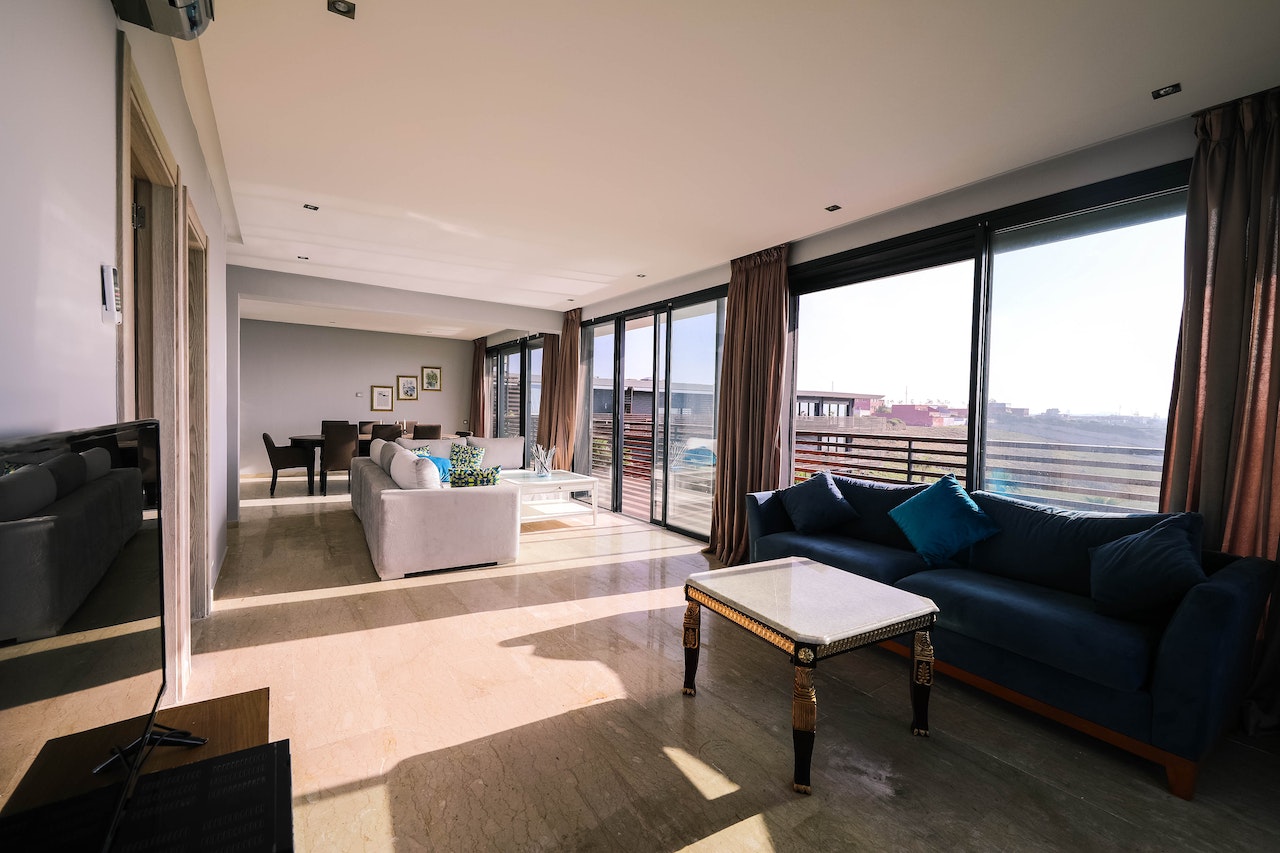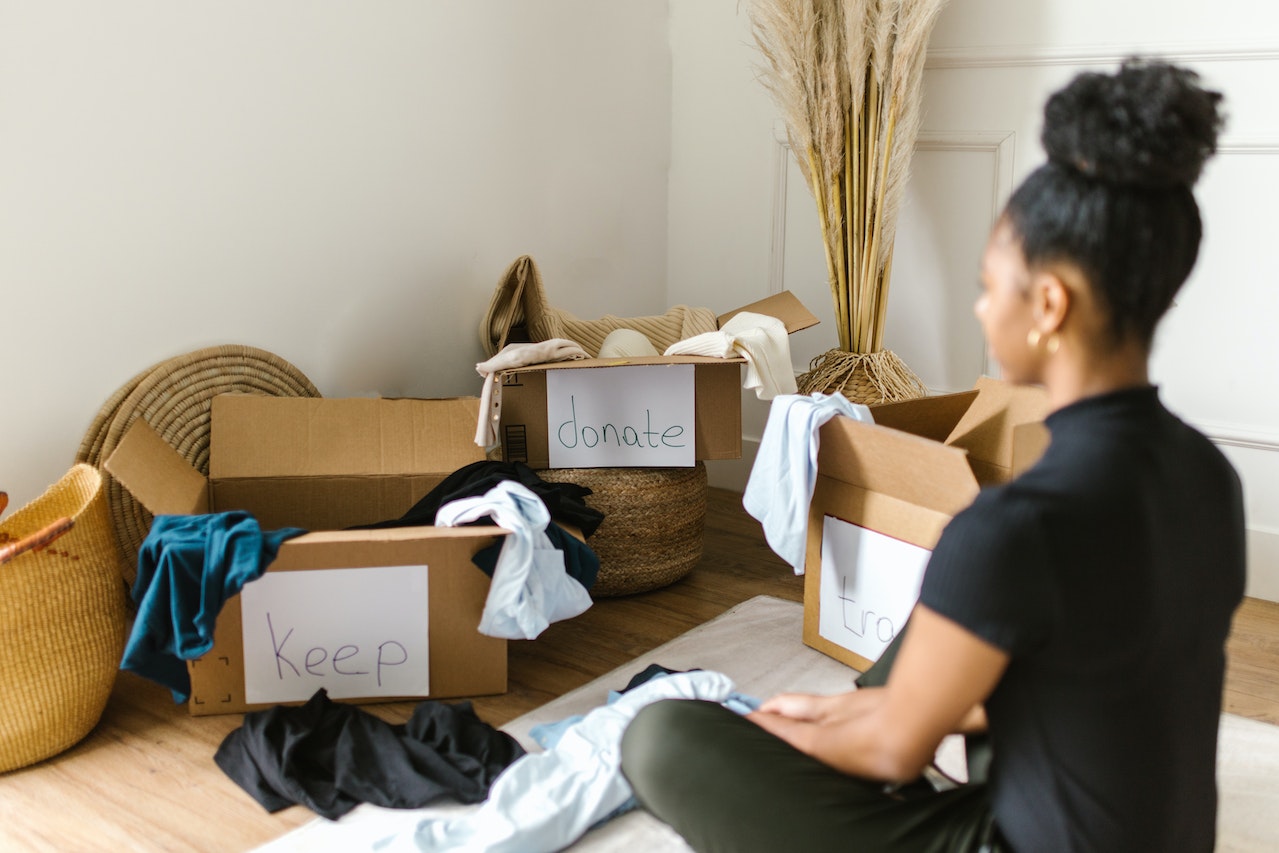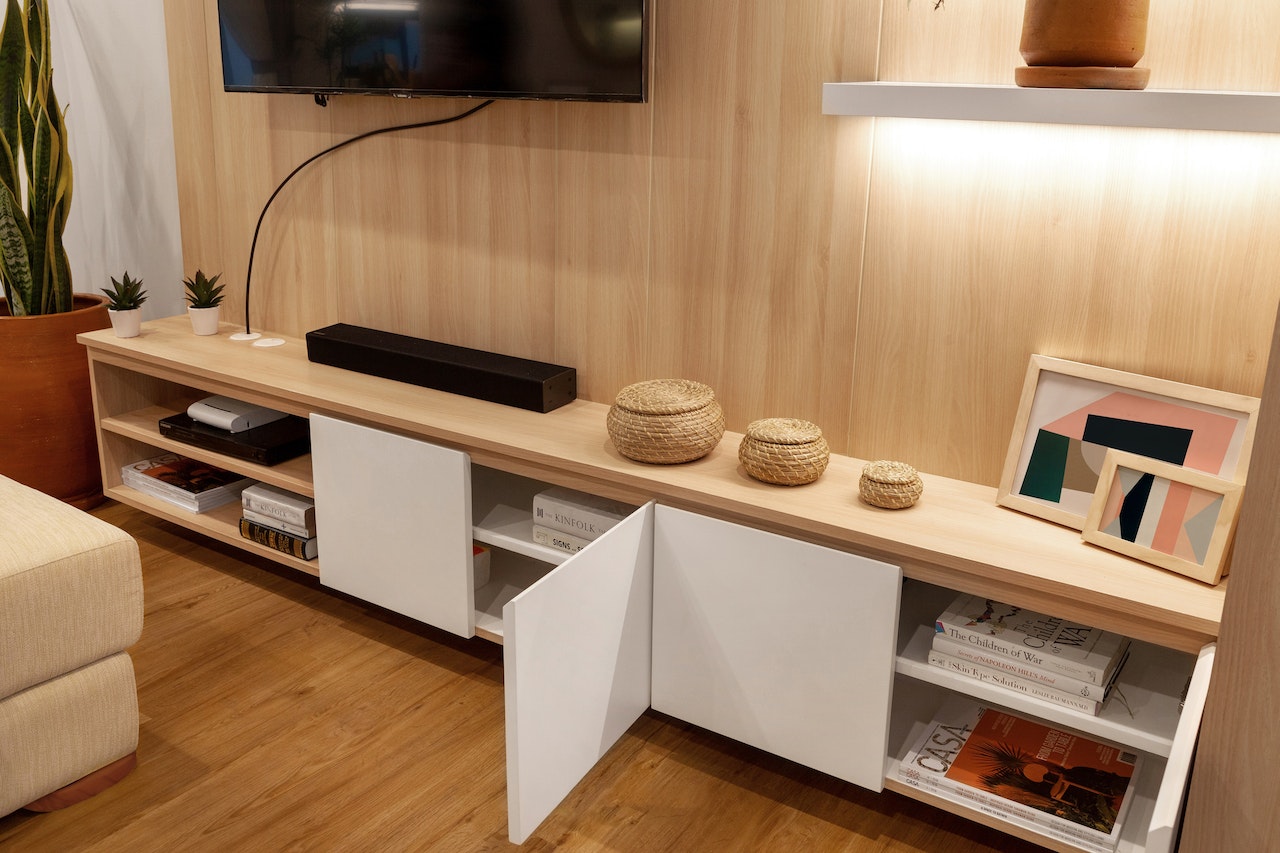If you look around your home and see that you’ve got too much stuff, most of it useless to you, you just might be developing a hoarding problem! While actual hoarding disorder is a mental illness characterized by excessive collection and difficulty discarding items, you may just have hoarding tendencies. Start small by picking one area to declutter. Getting organized step-by-step makes decluttering more manageable. Seek help from family, friends or professionals if needed. Addressing clutter now prevents worse hoarding issues.
The impact on a hoarder’s home and individuals’ lives can be severe, affecting their mental health, relationships, and living conditions. Either the same way, collecting more things and possessions than you are willing to give away is a pattern that can easily lead to a lifetime of hoarding! Addressing hoarding tendencies is crucial for overall well-being, as excess clutter can pose health risks and lead to feelings of overwhelm.
Starting the decluttering procedure or process can be daunting, but there are so many benefits to a clutter-free home. Utilizing decluttering tips and seeking professional help or support from family members can aid in the journey towards a tidy home and improved mental and physical health.
If you ever feel overwhelmed can relate to any of the above, it might be time to learn how to declutter your home before it is consumed by all your worldly possessions! Worry not, though, because decluttering is a lot easier than one might think.
No matter how so much stuff that you have accumulated over the years, if you are consistent, and work systematically, you will have no problems in getting rid of clutter. As an additional perk, a clutter-free house makes it easier to clean and maintain a healthy home.
To help get you started, we are sharing our top notch tips to do list for decluttering if you are a hoarders or on your way to becoming one! Let’s begin!
Decluttering Tips for Hoarders
For individuals struggling with hoarding tendency, implementing decluttering tips for hoarders can significantly improve their living conditions and mental health. Begin the decluttering process by addressing one room or area at a time, gradually sorting through excessive clutter.
It’s essential to acknowledge any hoarding behavior and seek support from family members or professional help if needed. When tackling hoarding clutter, consider segregating items into useful and useless categories to simplify decision-making.
Ensure there is adequate storage space for belongings, utilizing containers and organizing aids to maximize efficiency. Consistency is key, so aim to declutter daily, even if only for a few minutes. By staying committed to your decluttering journey, you can gradually achieve a clutter-free home and alleviate the overwhelm caused by excessive accumulation.
Remember to prioritize your mental health throughout the process and celebrate small victories along the way. With persistence and dedication, individuals can effectively manage hoarding and create a more organized living environment.
Organizing House With So Much Clutter
Organizing a house with so much clutter can be overwhelming, but with the right decluttering tips, it’s possible to create a more organized home. Start by addressing hoarding tendency and recognizing the need to declutter.
Utilize available storage space, such as attic storage or storage units, to keep belongings out of sight. Consider seeking professional help or support from family members to tackle hoarding disorder effectively.
Remember to prioritize your mental health throughout the process and celebrate small victories. With persistence and dedication, individuals can overcome compulsive hoarding and maintain a clutter-free environment.
Stay committed to your decluttering journey, knowing that a more organized living space contributes to better living conditions and overall well-being.
Hoarding Tendencies
Understanding and addressing hoarding tendencies is essential for individuals struggling with excessive clutter in their homes. Hoarding behavior often stems from underlying mental health issues, such as hoarding disorder. Recognizing these tendencies is the first step towards creating a clutter-free home and improving overall well-being.
To combat hoarding clutter, individuals can implement various decluttering tips. Starting small and focusing on one area at a time can help prevent feeling overwhelmed. Sorting through belongings and identifying unwanted items is crucial in the decluttering process.
Utilizing available storage space effectively, such as utilizing attic storage or storage units, can also aid in managing excessive accumulation. Seeking professional help or support from close friend or family members can provide additional assistance in tackling compulsive hoarding.
It’s important to prioritize mental health throughout the decluttering journey and celebrate progress made along the way. By persistently working towards a tidy home, individuals can overcome hoarding tendencies and create a more organized living space conducive to better living conditions.
Hoarding Decluttering Strategies
When addressing hoarding, it’s essential to implement effective decluttering strategies to create a more organized living environment. Start by acknowledging the need to declutter and seek support from family members or professional help if necessary. Utilize decluttering tips to systematically tackle excessive clutter.
Begin by focusing on one area at a time, such as staging area, one room or one drawer, to prevent feeling overwhelmed. Categorize belongings into unwanted items and sentimental items, disposing of or donating unnecessary things appropriately. Utilize available storage space, including attic storage or storage units, to keep belongings organized.
Involve family members in the decluttering process to give support groups ensure everyone is on board with the organizational goals. Consider seeking professional help to provide guidance and support throughout the decluttering journey.
Celebrate small victories along the way and recognize the progress made towards a clutter-free home. By implementing these hoarding decluttering strategies consistently, individuals can overcome hoarding tendencies and achieve a more tidy and organized living space, promoting better mental health and overall well-being.
Decluttering Process
The decluttering process involves systematically organizing and eliminating excessive clutter to create a more tidy home and improve living conditions. For individuals struggling with hoarding tendencies, it’s essential to begin by acknowledging the need to declutter and seeking support if necessary.
Start the decluttering journey by focusing on one area at a time, such as one room or one drawer, to prevent feeling overwhelmed. Utilize decluttering tips to help prioritize items, such as categorizing belongings into unwanted items and sentimental items.
Dispose of or donate unnecessary things in a donation bag or trash bag, keeping in mind the benefits of maintaining a clutter-free home for mental health. Utilize available storage space effectively, including attic storage or storage units, to keep belongings organized. Consider involving family members or seeking professional help to assist with the decluttering project.
Remember, every small step towards a more organized home has an immediate impact on living conditions and contributes to staying clutter-free. By persistently working through the decluttering process, individuals can overcome hoarding tendencies and achieve a more tidy and organized living space.
The following are the 5 best Decluttering and Cleaning Tips for every hoarders!
#1 Cut Clutter at the Source
 Decluttering your home is of little benefit if you are only going to collect more clutter in the future. All your efforts will go in vain, and you will be back to square one before you know it. So, first things first, understand the source of the clutter in your home, and the reasons for holding onto everything that you own. This will help you identify the mental aspect of hoarding and, in turn, provide a better understanding of how to deal with it.
Decluttering your home is of little benefit if you are only going to collect more clutter in the future. All your efforts will go in vain, and you will be back to square one before you know it. So, first things first, understand the source of the clutter in your home, and the reasons for holding onto everything that you own. This will help you identify the mental aspect of hoarding and, in turn, provide a better understanding of how to deal with it.
To effectively address hoarding tendencies, it’s essential to cut clutter at its source. Understanding why you hold onto items is key to breaking the cycle of excessive accumulation. Start decluttering by assessing the hoarding behavior and refraining from bringing in more items. Adopt practical decluttering top tips for hoarders, such as questioning the necessity of new items before acquiring them.
By prioritizing mental health and making logical decisions about what to bring into your living spaces, you can prevent excessive clutter from accumulating. This proactive approach sets the stage for a successful decluttering journey and promotes a clutter-free home.
Regardless of how small or big an object may be, be practical and logical about whether you need it. If you don’t have an immediate use for the object in question, that should be reason enough not to bring it home. Remember, addressing hoarding disorder and clutter starts with recognizing the need to control the inflow of unnecessary things and making conscious choices to stay clutter-free.
#2 Declutter Gradually
Starting small is very important because, for many, it is an emotional and overwhelming experience to suddenly disrupt the placement of things and, more so, to get rid of them. For these reasons, a gradual approach is highly recommended when decluttering a house that has been subjected to hoarding. Starting small can also help to reverse hoarding tendencies which is the ultimate goal.
Starting small allows individuals to emotionally adjust and gradually reverse hoarding behavior. Begin by focusing on one room and collecting items that can be discarded, such as empty packaging or unused items. This step-by-step approach makes it easier to let go of unnecessary things and reclaim storage space in the entire home again.
To begin the actual process of decluttering, start with one room and pick out items that need to be trashed. This stuff could be in the form of empty packaging or boxes from online deliveries, or just about anything that was meant to be thrown out but hasn’t yet been discarded. Remember, decluttering tips like starting with one drawer or a small area can lead to significant progress over time.
By gradually clearing out excessive clutter, individuals can work towards a clutter-free home and prioritize their mental health also, it is easier to let go difficulty letting go of completely useless items as opposed to possessions hoarders or items that are owned in excess. Don’t rush the process—take it one step at a time to ensure long-term success on your decluttering journey.
#3 Segregate Items

Make ‘useful’ and ‘useless’ piles to segregate all the things you have lying around in a room. When addressing hoarding tendencies, it’s helpful to segregate items into useful and useless piles to streamline the decluttering process. Use boxes or clear surfaces to separate belongings, acknowledging that it may be challenging to label some items as “useless.” However, this step allows individuals to differentiate between what they truly need and what occupies space unnecessarily.
By reevaluating possessions, individuals can gradually become more comfortable with letting go of items that no longer serve them, promoting a clutter-free home and improved mental health. We understand that it may be difficult to deem some possessions as ‘useless’, however, this is where you need to put in the extra effort and understanding required to differentiate between what you need, and what is of no use to you, and never will be.
As you begin to reevaluate your belongings, you will learn to be more accepting of letting go of certain things that do not serve you, and yet occupy space in your home. It is also advisable to further segregate useful items to determine what can be packed and kept in storage versus items that will be used more frequently. Additionally, further segregating useful items can help determine what should be stored away and what should be readily accessible. This approach maximizes storage space and facilitates a more organized living environment. Remember, every small step towards decluttering contributes to long-term success in managing hoarding.
#4 Ensure Adequate Storage Space
One of the reasons why clutter often accumulates is because there isn’t enough storage space for your belongings. While having excess possessions can also be a problem, how efficiently you organize storage space for miscellaneous items in your home is crucial. With the help of containers, dividers, and other organizing aids, you can free up a lot more storage space around your kitchen appliances new clothes, and home, thus ensuring that there is a designated place for everything.
After creating space, maintain organization by promptly returning items to their places and arranging them neatly. Reorganize cabinets and drawers to further declutter these areas and promote an organized home. By efficiently managing storage space, individuals can prevent hoarding clutter buildup and cultivate a clutter-free environment conducive to better mental health. Remember, proper storage utilization is key to managing hoarding disorder and sustaining a tidy living space.
Of course, creating adequate space is the first step, with proper utilization of the space being the second. Make it a habit to put things back in their respective places as soon as you see them lying around, and ensure that they are put away neatly and not in a haphazard manner. Addressing hoarding involves ensuring there is adequate storage space for belongings. Lack of storage can contribute to excessive clutter accumulation. It is also a good idea to reorganize cabinets and drawers to declutter these spaces as well.
#5 Declutter Daily

One of the best ways to declutter your home is to do a little every day. Consistency is key when tackling hoarding, and one effective strategy is to declutter daily. Spending just a few minutes each day to clear cluttered surfaces or areas can make a significant difference over time. Similar to ‘starting small’, these little efforts go a long way in decluttering your house because it ensures consistency in achieving your end goal. Whether you schedule a specific time for decluttering or address it spontaneously, focus on at least one room per day to manage excessive accumulation.
Whether you set a fixed time in your day to declutter, or simply do it spontaneously when the need arises, we advise picking at least one room (per day) to deal with some of the clutter, if not all. Bear in mind that even decluttering daily should not overwhelm you but rather, encourage you to reach your goal, one day at a time.
Remember, the goal is progress, not perfection, so don’t let the task overwhelm you. By incorporating daily decluttering into your routine, you maintain momentum on your decluttering journey and gradually create a clutter-free environment conducive to better mental health. These small efforts contribute to a more organized home and help individuals manage hoarding disorder effectively. Stay committed to your goal, taking it one day at a time, and celebrate the progress made along the way.
CONCLUSION
Hoarding can affect your overall mental well-being and create a more harmonious living environment, therefore, must be addressed as early on as possible. It’s very crucial to recognize the negative impact clutter can have on one’s mental health and take proactive steps to address it.
By halting the influx of new items into the home and adopting a slow and steady approach to decluttering, individuals can begin to regain control over their living spaces. Regardless of how cluttered your home has become due to this disorder, there is always a way out, and that begins with putting a stop to bringing more things into your home.
From there, a slow and steady approach to decluttering is advised, all the while ensuring that you are ridding your home of useless items. Maintaining well-organized storage spaces is essential for preventing clutter from accumulating and taking over surfaces.
Consistently decluttering a little bit each day can yield significant progress over time, ultimately leading to the achievement of a clutter-free home. With dedication and persistence, individuals can overcome hoarding tendencies and enjoy the benefits of a more organized and tranquil living space.
Lastly, it is important to keep storage spaces well-organized so that there is no need to leave things and old clothes lying around and cluttering up surfaces. By decluttering your home little by little every day, you are guaranteed to achieve your goal of living in a clutter-free home!
PS – We were named a top organizing and decluttering expert by Redfin. Check out the article we were featured in 31 House Cleaning Tips That Professionals Swear By


